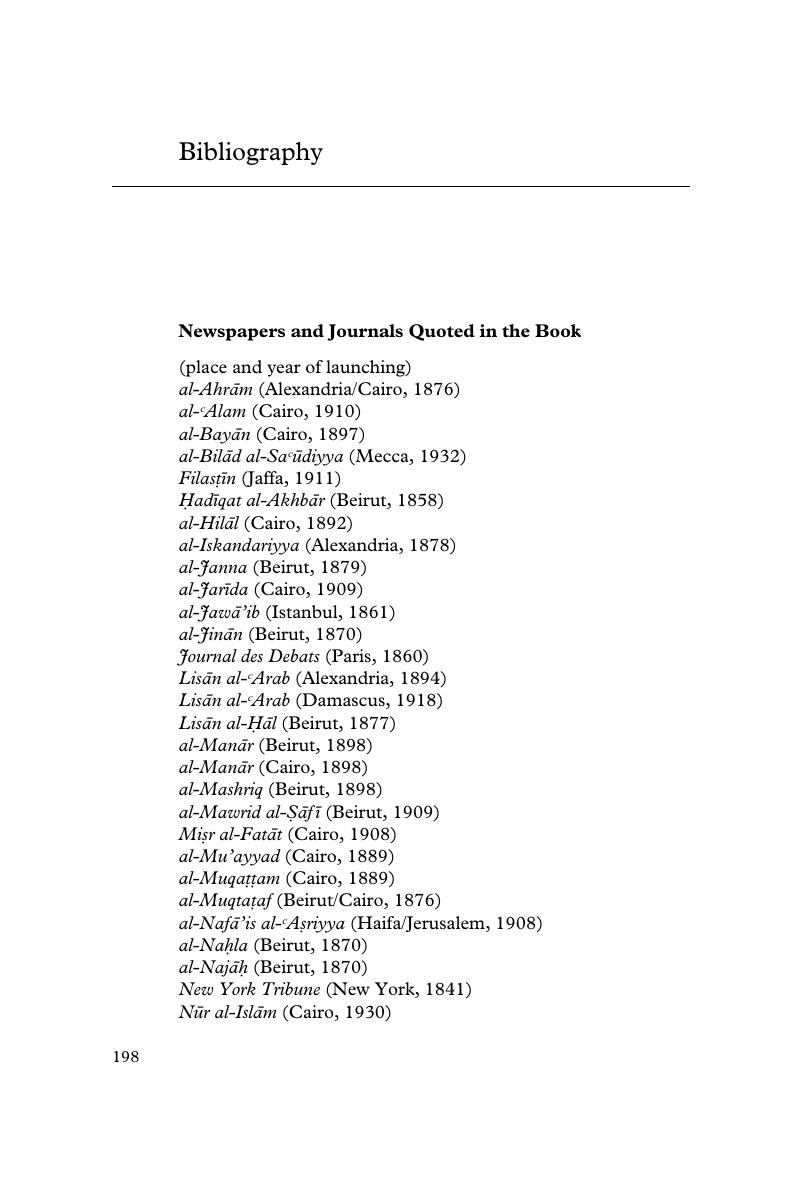Book contents
- Frontmatter
- Dedication
- Contents
- Preface and Acknowledgments
- Introduction
- 1 The Formative Phase of Arab Printing: A Historical Overview
- 2 Printers and Publishers
- 3 Books, Journals, Cartes de visite
- 4 Diffusion Channels
- 5 Advancing Circulation
- 6 Reading and Readers
- 7 Reading in Public
- Conclusion
- Bibliography
- Index
- References
Bibliography
Published online by Cambridge University Press: 05 September 2016
- Frontmatter
- Dedication
- Contents
- Preface and Acknowledgments
- Introduction
- 1 The Formative Phase of Arab Printing: A Historical Overview
- 2 Printers and Publishers
- 3 Books, Journals, Cartes de visite
- 4 Diffusion Channels
- 5 Advancing Circulation
- 6 Reading and Readers
- 7 Reading in Public
- Conclusion
- Bibliography
- Index
- References
Summary

- Type
- Chapter
- Information
- The Arabic Print RevolutionCultural Production and Mass Readership, pp. 198 - 215Publisher: Cambridge University PressPrint publication year: 2016

